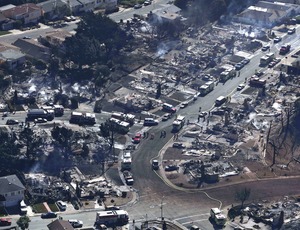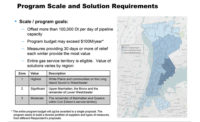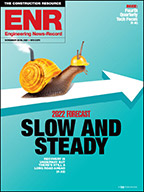
As Congress weighs expedited construction of large-diameter natural-gas transmission pipelines, federal and state officials are considering more oversight of largely unregulated gas-gathering lines.
Regulators and environmental advocates claim the gathering lines are proliferating in size and number but are not well scrutinized. The push could mean billions in additional costs for industry, some observers say.
The issue of unregulated gathering lines, which carry natural gas from wells to nearby separation facilities for processing, has gained attention because of the spread of hydraulic fracturing and because of high-profile fatal pipeline accidents, such as in San Bruno, Calif., in 2010 and in Allentown, Pa., in 2011.
The U.S. Transportation Dept.'s Pipeline and Hazardous Material Safety Agency (PHMSA) now regulates only about 10% of the 240,000 miles of U.S. onshore gathering lines.
Like large-bore, high-pressure transmission pipelines, gathering lines in shale regions are upsizing to deal with larger amounts of gas from fracked well bores; some can be as large as 16, 24 or even 30 in. in dia and operate at up to 1,100 psi, although they still cross relatively short distances from well pads to process plants or to interstate pipeline interconnects, said the U.S. Government Accountability Office in 2012.
Most gathering lines are in rural locations that are exempt from both federal mandates and more recent rules in states such as Pennsylvania and Texas, with large fracking operations.
Congress has asked PHMSA to begin developing an inventory of U.S. gathering lines in advance of any new rules, but the agency has not yet begun to collect the data. The Gas Processors Association and the American Petroleum Institute provided it with the 240,000-mile figure in a survey last fall.
PHMSA is set to issue a notice of proposed rule-making soon, but spokesman Damon Hill could not pinpoint a date, claiming the agency is still reviewing comments received since 2011.
Pipeline industry firms say such regulation should continue to be risk-based—that is, developed and imposed only on systems near populated areas or that pose other risk factors. "Gas gathering lines have not been overlooked in the level of regulation by PHMSA. It was a deliberate decision," says Jeff Applekamp, vice president of the Gas Processors Association. "We did not need the same oversight as transmission and distribution lines."
The group wants PHMSA to wait until it has submitted its inventory report to Congress, due by Jan 3. The document also will include a review of the economic impacts and technical challenges of potential new mandates.
But environmental advocates say operations in the most active parts of Pennsylvania's Marcellus region feature 16-in. to 30-in.-dia gathering lines, with routes usually governed by landowner issues.
"In one township, you can have all those sizes and one pipeline crossing the road multiple times," said Emily Krafjack, president of advocacy group Connection for Oil, Gas & Environment in the Northern Tier. She cited one landowner who appeared "not to understand what he was signing" when he approved routing 24-in.-dia lines on either side of his home.
Krafjack says her group also is concerned that changing asset ownership is creating new risks.
"There's been an amazing amount of construction this year, and ... there's probably three more years of it here," she says. "When these pipelines are unregulated—as most are—they don't have to notify anyone when there's a leak."
Applekamp says most pipe accidents are from third-party strikes and that his group supports legislation to remove all exemptions from one-call systems.
Krafjack acknowledged that some pipeline firms have rerouted gathering lines when presented with evidence of geological risks. "These guys come here from Texas, which has a very dry climate, and [in Pennsylvania] you have a very wet climate. We know the streams and the soil—things you're not going to find out just doing a bore sample."
Applekamp says pipes are surveyed regularly for leaks, and welding is covered by industry standards and PHMSA requirements for depth of cover, hydrotesting and quality assurance.
"We don't want to say we should be entirely self-policing," he says. "But we also don't want regulators making rules based on … emotion."




Post a comment to this article
Report Abusive Comment